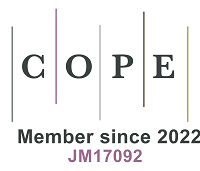REFERENCES
2. FAA, U.S. Federal Aviation Administration, 2018. Safety Alert For Operators SAFO 18003. Available from: https://www.faa.gov/sites/faa.gov/files/other_visit/aviation_industry/airline_operators/airline_safety/SAFO18003.pdf [Last accessed on 19 May 2023].
3. ICAO, International Civil Aviation Organisation.2015. Cir 344-AN/202 guidelines on education, training and reporting practices related to fume events. Available from: https://news.mcaa.gov.mn/uploads/bookSubject/2022-05/6279ec7ddb47e.pdf [Last accessed on 19 May 2023].
4. DGAC, French civial aviation administration, 2020. INFO SÉCURITÉ DGAC N° 2020/05. Available from:https://www.ecologie.gouv.fr/sites/default/files/info_securite_2020_05_prevention_emanation_fumee.pdf [Last accessed on 19 May 2023].
5. Winder C, Balouet JC. Aerotoxic Syndrome: adverse health effects following exposure to jet oil mist during commercial flights. proceedings of the international congress on occupational health conference. Available from: https://www.researchgate.net/publication/266573677_AEROTOXIC_SYDROME_ADVERSE_HEALTH_EFFECTS_FOLLOWING_EXPOSURE_TO_JET_OIL_MIST_DURING_COMMERCIAL_FLIGHTS [Last accessed on 19 May 2023]
7. Hayes K, Megson D, Doyle A, O’Sullivan G. Occupational risk of organophosphates and other chemical and radiative exposure in the aircraft cabin: a systematic review. Sci Total Environ 2021;796:148742.
8. Megson D, Ortix X, Jobst KJ, Reiner EJ, Mulder MFA, Balouet JC. A comparison of fresh and used aircraft oil for the identification of toxic substances linked to aerotoxic syndrome. Chemosphere 2016;158:116-23.
9. Shehadi M, Jones B, Hosni M. Characterization of the frequency and nature of bleed air contamination events in commercial aircraft. Indoor Air 2015:1-11.
10. NRC, U.S. National Research Council. 2002 The airliner cabin environment and the health of passengers and crew. Available from: https://perma.cc/5L4Y-DJT7 [Last accessed on 19 May 2023].
11. Jones BW, Amiri SN. The nature of particulates in aircraft bleed air resulting from oil contamination. ASHRAE Winter Conference. Available from: https://www.techstreet.com/standards/lv-17-c046-the-nature-of-particulates-in-aircraft-bleed-air-resulting-from-oil-contamination?product_id=1945017#full [Last accessed on 19 May 2023]
12. Michaelis S, Loraine T, Howard CV. Ultrafine particle levels measured on board short-haul commercial passenger jet aircraft. Environ Health 2021;20:89.
13. Chemspider 2023. Available from: https://www.chemspider.com [Last accessed on 19 May 2023].
14. Pubchem 2023. Available from: https://pubchem.ncbi.nlm.nih.gov[Last accessed on 19 May 2023].
15. INRS Institut National de Recherche et de Sécurité (France) / French National Institute for Research and Safety 2023. Available from: https://www.inrs.fr [Last accessed on 19 May 2023].
16. CNESST : Commission des Normes, de l'Equité, de la Santé et de la Sécurité du Travail (Quebec - CANADA) 2023. Available from: https://www.cnesst.gouv.qc.ca/en [Last accessed on 19 May 2023].
17. Health and Safety Executive 2023. Available from: https://www.hse.gov.uk/index.htm [Last accessed on 19 May 2023].
18. IFA Institut für Arbeitsschutz der DGUV / German institute for occupational safety and health 2023. Available from: https://www.dguv.de/ifa/index-2.jsp[Last accessed on 19 May 2023].
19. EU-OSH 2023. Available from: https://oshwiki.osha.europa.eu/en/themes/occupational-exposure-limit-values [Last accessed on 19 May 2023].
20. Scholz, D. Routes of aircraft cabin air contamination from engine oil, hydraulic and deicing fluid. Available from:https://bulletin.incas.ro/files/scholz-d__vol_14_iss_1.pdf [Last accessed on 19 May 2023].
21. Lee, S. C., Poon, C. S., Li, X. D., et al. 2000. Air Quality Measurements on Sixteen Commercial Aircraft. Air Quality and Comfort m Airliner Cabins, ASTM STP 1393, N. L. Nagda, Ed., American Society for Testing and Materials, West Conshohocken, PA. Available from: https://www.astm.org/stp1393-eb.html[Last accessed on 19 May 2023].
22. Lindgren T, Norback D. Cabin air quality: Indoor pollutants and climate during intercontinental flights with and without tobacco smoking. Indoor Air 2002;12:263-72.
23. Lindgren T, Norback D, Wieslander G. Perception of cabin air quality in airline crew related to air humidification, on intercontinental flights. Indoor Air 2007;17:204-10.
24. Wolkoff P, Crump DR, Harrison PTC. Pollutant exposures and health symptoms in aircrew and office workers: is there a link? Environ Int 2016;87:74-84.
25. Schuchardt S, Koch W, Rosenberger W. Cabin air quality - quantitative comparison of volatile air contaminants at different flight phases during 177 commercial flights. Build Environ 2019;148:498-507.
26. Watterson A, Michaelis S. Use of exposure standards in aviation. In Proceedings of the International Aircraft Cabin Air Conference. J Health Pollut 2017;9:S1-S142.
27. Balouet JC, Hoffman H, Winder C. Aviation and Exposure to Toxic Chemicals. SAE Technical Papers;1999.
28. Kecklund G, Axelsson J. Health consequences of shift work and insufficient sleep. Clinical review. BMJ 2016;355:i5210.
29. Howard CV, Johnson DW, Morton J, Michaelis S, Supplee D,et al. Is a cumulative exposure to a background aerosol of nanoparticles part of the causal mechanism of aerotoxic syndrome? Available from: https://www.researchgate.net/publication/325746068_Is_a_Cumulative_Exposure_to_a_Background_Aerosol_of_Nanoparticles_Part_of_the_Causal_Mechanism_of_Aerotoxic_Syndrome[Last accessed on 19 May 2023].
31. More SJ, Bampidis V, Benford D, et al. Guidance on harmonised methodologies for human health, animal health and ecological risk assessment of combined exposure to multiple chemicals. EFSA Journal 2019;17:5634-77.
32. IGHRC 2009 Chemical Mixtures: A Framework for Assessing Risk to Human Health (CR14). Institute of Environment and Health, Cranfield University, UK. Available from: http://www.iehconsulting.co.uk/IEH_Consulting/IEHCPubs/IGHRC/cr14.pdf [Last accessed on 19 May 2023].
33. Kortenkamp A. Ten years of mixing cocktails: a review of combination effects of endocrine-disrupting chemicals. Environ Health Perspect 2007;115:1.
34. Kortenkamp A, Martin O, Faust M, et al. 2011 State of the art assessment of endocrine disrupters. Available from: https://ec.europa.eu/environment/chemicals/endocrine/pdf/sota_edc_final_report.pdf [Last accessed on 19 May 2023].
35. Demeneix B, Vandenberg LN, Ivell R, Zoeller RT. Thresholds and endocrine disruptors: an endocrine society policy perspective. Journal of the Endocrine Society ;4:1-7.
36. UNEP, United Nations Environment Programme., State of the Science of Endocrine Disrupting Chemicals 2012: Summary for Decision-Makers. Available from: https://www.unep.org/resources/report/state-science-endocrine-disrupting-chemicals-2012-summary-decision-makers [Last accessed on 19 May 2023].
37. ECHA European Chemicals Agency., 2021. Chemical registration dossier for dibutyl phthalate. Available from: https://echa.europa.eu/registration-dossier/-/registered-dossier/14862/7/1 [Last accessed on 19 May 2023].
38. Ronis MJJ, Wands JR, Badger TM, et al. Alcohol-induced disruption of endocrine signaling. Alcohol Clin Exp Res 2007;1:1269-85.
39. Kubincova P, Sychrova E, Raska J, et al. Polycyclic aromatic hydrocarbons and endocrine disruption: role of testicular gap junctional intercellular communication and connexins. Toxicol Sci 2019;69:70-83.
40. Bars R, Fegert I, Gross M, et al. Risk assessment of endocrine active chemicals: identifying chemicals of regulatory concern. Regul Toxicol Pharmacol 2012;64:143-54.
41. Van Reeth O, Reeth O. Sleep and circadian disturbances in shift work: strategies for their management. Horm Res 1998;49:158-162.
42. Ulhoa MA, Marqueze EC, Burgos LGA, Moreno CRC. Shift Work and Endocrine Disorders. Int J Endocrinol 2015:826249.
43. European Union Aviation Safety Agency (EASA), Preliminary cabin air quality measurement campaign. Available from: https://www.easa.europa.eu/en/document-library/research-reports/easarepresea20144 [Last accessed on 19 May 2023].
44. Airliner Cabin Environment Research (ACER), In-Flight/Onboard Monitoring: ACER’s Component for ASHRAE 1262, Part 2, 2012. Available from: https://www.faa.gov/data_research/research/med_humanfacs/cer/media/In-FlightOnboardMonitoring.pdf [Last accessed on 19 May 2023].
45. Payne SS. Regulation 28: Report to Prevent Future Deaths. Senior Coroner’s report for the County of Dorset. Available from: https://www.judiciary.uk/wp-content/uploads/2015/03/Westgate-2015-0050.pdf [Last accessed on 19 May 2023].
46. Allen JG, Sumner AL, Nishioka MG, et al. Air concentrations of PBDEs on in-flight airplanes and assessment of flight crew inhalation exposure. J Expo Sci Environ Epidemiol 2013:23.
47. Allen JG, Stapleton HM, Vallarino J, et al. Exposure to flame retardant chemicals on commercial airplanes. Environ Health 2013:12.
48. Crump C, Harrison P, Walton C. Aircraft Cabin Air Sampling Study; Part 1 of the Final Report. Available from: https://www.researchgate.net/publication/268521555_Aircraft_Cabin_Air_Sampling_Study_Part_1_of_the_Final_Report [Last accessed on 19 May 2023].
49. Guan J, Gao K, Wang C, et al. Measurements of volatile organic compounds in aircraft cabins. Part I: Methodology and detected VOC species in 107 commercial flights. Build Environ 2014;72:154-61.
50. Guan J, Wang C, Gao K, et al. Measurements of volatile organic compounds in aircraft cabins. Part II: Target list, concentration levels and possible influencing factors. Build Environ 2014;75:170-175.
51. Guan J, Li Z, Yang X. Net in-cabin emission rates of VOCs and contributions from outside and inside the aircraft cabin. Atmospheric Environment 2015;111:1-97.
52. Rosenberger W, Beckmann B, Wrbitzky R. Airborne aldehydes in cabin-air of commercial aircraft: Measurement by HPLC with UV absorbance detection of 2,4-dinitrophenylhydrazones. Journal of Chromatography B 2016;1019:117-27.
53. Rosenberger W. Effect of charcoal equipped HEPA filters on cabin air quality in aircraft. a case study including smell event related in-flight measurements. Build Environ ;143:358-365.
54. Solbu K, Daae HL, Olsen R, et al. Organophosphates in aircraft cabin and cockpit air - Method development and measurements of contaminants. Journal of Environmental Monitoring 2011;13:1393-1403.
55. Wang C, Yang X, Guan J, Li Z, Gao K. Source apportionment of volatile organic compounds (VOCs) in aircraft cabins. Build Environ 2014;81:1-6.
56. Nagda N, Koontz M, Konheim A, Hammond K. Measurement of cabin air quality aboard commercial airlines. Atmospheric Environment 1992;26A:2203-10.
57. van Netten C. Design of a small personal air monitor and its application in aircraft. Science of the Total Environment 2009;407:1206-10.
58. Giaconia C, Orioli A, Di Gangi A. Air quality and relative humidity in commercial aircrafts: An experimental investigation on short-haul domestic flights. Build Environ 2013;67:69-81.
59. Li Z, Guan J, Yang X, Lin CH. Source apportionment of airborne particles in commercial aircraft cabin environment: Contributions from outside and inside of cabin. Atmos Environ 2014;89:119-28.
60. van Netten C. Air quality and health effects associated with the operation of bae 146-200 aircraft. Appl Occup Environ Hyg 1998;13:733-9.
61. Wieslander T, Norback D, Venge P. Changes in the ocular and nasal signs and symptoms of aircrews in relation to the ban on smoking on intercontinental flights. Surv Ophthalmol 2000;46:298.
62. Spengler JD, Ludwig S, Weker RA. Ozone exposures during trans-continental and trans-pacific flights. Indoor Air 2004;14:67-73.
63. Denola G, Hanhela PJ, Mazurek W. Determination of tricresyl phosphate air contamination in aircraft. Ann Occup Hyg 2011;55:710-22.
64. Zhai S, Li Z, Zhao B. State-space analysis of influencing factors on airborne particle concentration in aircraft cabins. Build Environ 2014;74:13-21.







